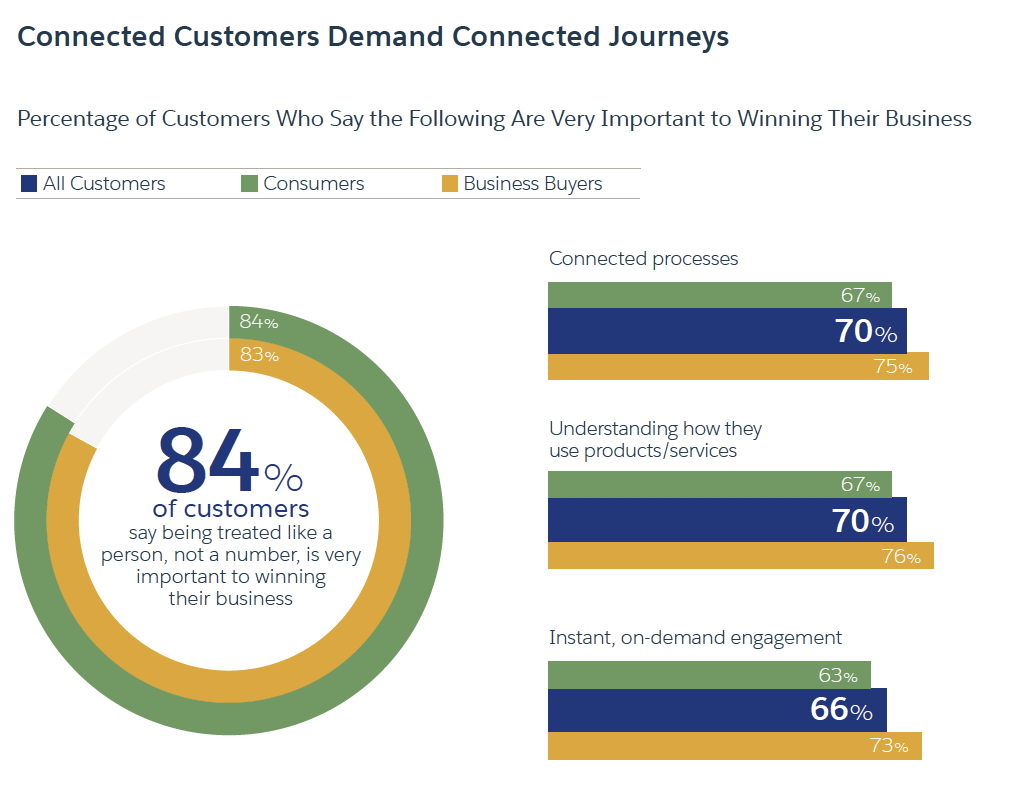"Let’s build it to be as easy to use and seamless as Amazon.com or Netflix." — Farukh Javed, CSA Group EVP and Chief Digital Officer, during his 2018 Dreamforce session.
Like countless other B2B companies, that was the aspiration when the CSA Group embarked on a project to deliver its products and services online. Yet when the company sat down to actually block out the challenge, it quickly discovered that its business was significantly more complex than anything those two consumer-oriented companies had to deal with.
CSA is a standards company. It develops and publishes the product, testing, inspection, and certification standards. It has 35,000 clients globally and more than 70,000 ever-changing products. A lawyer might want to download a single standard. A librarian might want a subscription with digital rights management control. Both customers would want a custom solution with an appropriate price upon purchase and informed service post-sale.
CSA built a complete customer engagement solution, fronted by robust B2B Commerce and supported by digital rights management, search, automation, and customer service — cloud-based solutions, most of them from Salesforce. Now, all the customer can see is an easy-to-use self-service experience that is, indeed, as smooth and intuitive as Amazon. CSA clients can search for what they want, decide how they want to buy it and then set up the best way to consume it from any device. CSA, meanwhile, uses a 360-degree view of the customer to cross-sell products based on user preferences and they keep track of all interactions and provide informed, personal service when necessary. The result has been a 24% increase in average order volume and a 33% increase in conversion rate.
Soaring expectations
At a time when customer expectations have never been higher, B2B companies like CSA face a daunting challenge. Though the products, services, and customer relationships are often more complex than those in the consumer world, business customers are in no mood to cut them any slack.
The Salesforce Research State of the Connected Customer report lays out the stakes B2B customers face. Salesforce found that 75% of business buyers cite connected experiences like seamless handoffs or contextualized engagement based on earlier interactions as very important to win their business. Similarly, 73% of business buyers expect instant, on-demand engagement from the companies they do business with.

The good news, of course, is that the companies that can deliver on these expectations are reaping the rewards. As CSA discovered, if you can anticipate what customers want and make it easier to get what they need, they will buy more and stick with you. But while B2B customers demand highly intuitive self-service options that make routine interactions easier, they also want companies to leverage technology to provide the kind of smart, proactive, bespoke service that can help them run their own businesses more effectively.
Seek salespeople who act as trusted advisors
The most competitive B2B companies excel in building customer journeys in which every interaction reflects things like contract terms, a customer’s unique geographical footprint, and the interactions company and customer have had in the past. Trust and loyalty stem from clearly understanding a customer’s business, recognizing the relationship, and tailoring solutions to address unique needs.
Winning with a united front
To meet these demands, the most effective B2B companies erase barriers between sales, marketing, and service and blend these functions to give customers a seamless, full-function experience. Presenting a united front to customers requires breaking down silos and working as a team. Salesforce found that the overwhelming majority of high-performing service organizations say they share goals and metrics with sales (89%) and marketing (86%) so everybody is on the same page. This not only creates a unified front but can also boost revenue. As many as 86% of high performers report that service proactively alerts sales to opportunities and contributes to the sales pipeline by mining customer interactions. Similarly, service and marketing coordinate closely to ensure that intelligence gained in service interactions informs marketing campaigns and is fed back into product development efforts.
Consider an industrial customer who regularly orders parts from a company that sold her a set of machine tools several years earlier. Most of the time, the buyer will be more than happy to handle orders via a personalized commerce portal without having to talk to anybody. When she logs in, she might see a customized set of products at negotiated prices and any promotions or cross-selling opportunities the marketing department offers. But what if the customer orders a new part and has trouble installing it? She will call the company expecting to talk to someone who can instantly understand her issue and how to quickly solve it.
A truly empowered service agent would be able to call up the order, view the customer’s purchase history, access related service articles, and decide what to do. The answer might be to access a guided set of installation steps and help the customer over the phone. Alternatively, the agent might send the case to the field, where a mobile service rep can look at the entire file on an iPad and assess the situation on site. What makes it work is that everyone involved looks at the same deep well of customer and product data and resources.
Any interaction of this sort might also turn up opportunities to generate new revenue. Maybe the agent can proactively suggest maintenance, based on the suite of machine tools the customer has installed in her plant. Or maybe the agent can suggest the customer spend a bit more on a part with more functionality to increase the efficiency of the tool in question. At this point, the agent could even offer to complete the sale via the commerce platform.
The point is that combining commerce, sales, marketing, and service gives everyone in the company the power to serve a customer with a single face. As more and more B2B companies find, going to market with anything less is a recipe for unhappy customers and sub-par performance. Let’s commerce better. Let’s commerce together.




























